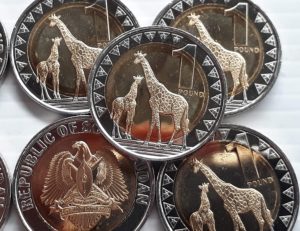What is Bi-Metallic?
 Objects that are composed of different metals but not the same as metal alloys. Bi-metallic coins are not a mix of precious metals, they are rather made from two or more distinct metal materials.
Objects that are composed of different metals but not the same as metal alloys. Bi-metallic coins are not a mix of precious metals, they are rather made from two or more distinct metal materials.
The minting process for bi-metallic coins includes the creation of two separate metal components. While the parts are created at the same time, the separate pieces are deformed in a way to hold them together. They can either interlocked or fused together to create two separate metal faces on the same coin. These coins were created not only for their lovely aesthetic but also a means to discourage coin counterfeiting.
Bi-metallic coins have been in use since the 17th century. Well-documented examples include the creation and use of special occasion medals in the Roman Empire.
Examples of modern bi-metallic coins include:
- Italian 500 Lire
- Moroccan 5 Dirham
- French 10 Franc
- Monégasque 10 franc coin
- Thai 10 baht
- Hong Kong $10 coin
- Hungarian 100 forint coin
- Brazilian 1 real coin
- Indian 10 rupee coin
- Canadian $2 coins/toonies
- Great Britain 2-pound coin
- Singaporean $1 coin
Bi-metallic coins are often minted from precious metals and are created to memorialize special occasions and are generally higher denominations. The U.S. has issued its own bi-metallic coin in honor of the Library of Congress. It is the first bi-metallic coin issued by the U.S. Mint and has a striking design of a gold ring around platinum. One side portrays the Goddess of Wisdom with a raised torch of learning. The opposite side depicts a laurel wreath circling the Library of Congress seal. The issue price, the initial price of a new mint on the market, was $425.
What people ask…
How are bi-metallic strips useful?
How does a bimetal switch work?
What happens when a bi-metallic strip is heated?
What is the significance of Bi-metallism?
What is the bi-metallic standard?
See Also…
Back to All Terms
